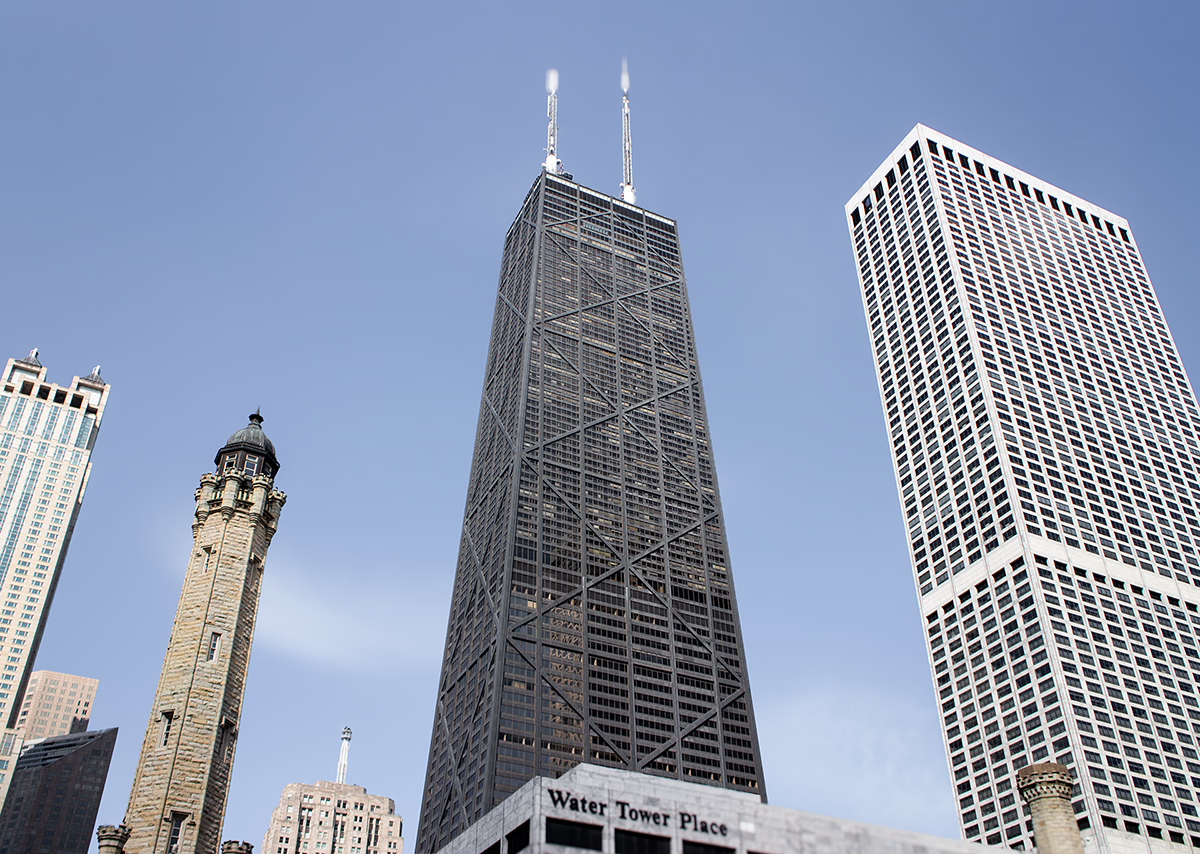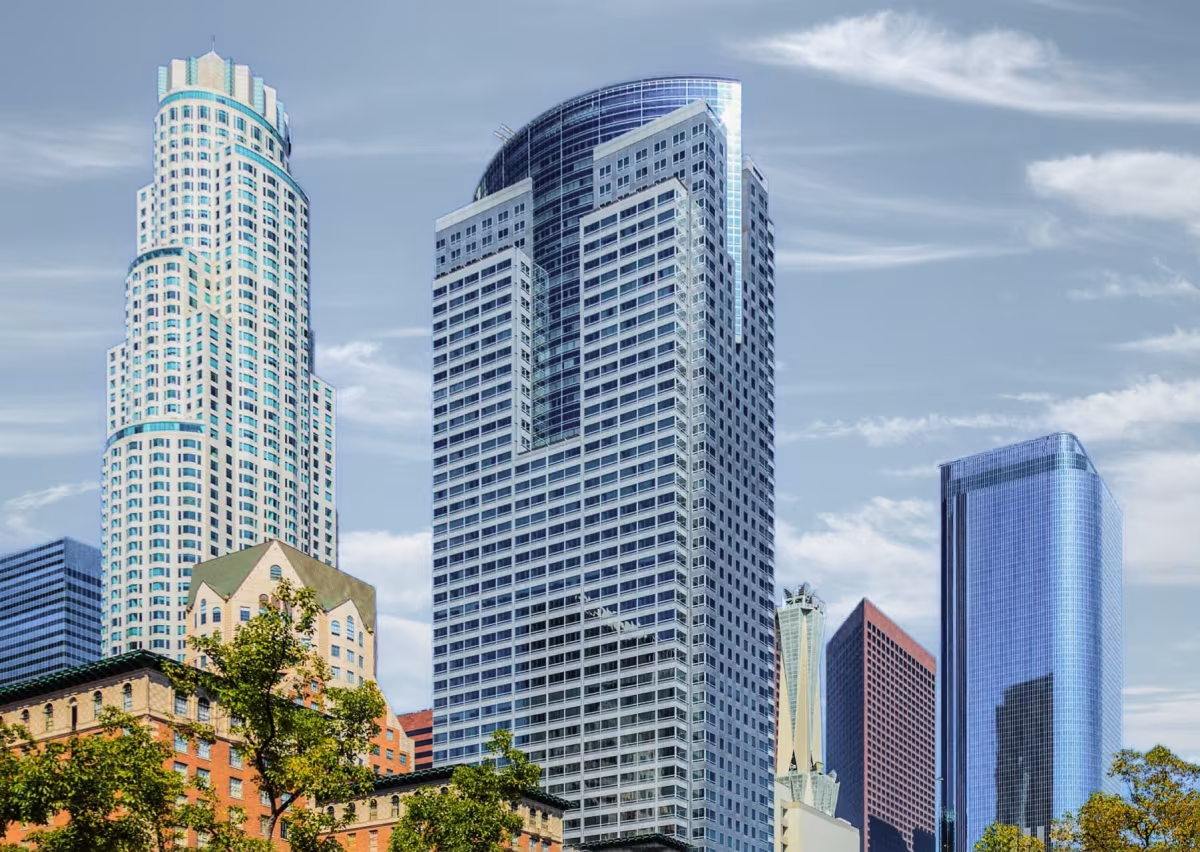John Hancock Center vs Gas Company Tower


Comparing the John Hancock Center and the Gas Company Tower is compelling because they were both designed by Skidmore, Owings & Merrill, yet they stand in different cities (Chicago, IL and Los Angeles, CA), and were completed over two decades apart.
What this will allow us to see, is how the same firm's approach adapted to different places in different periods of time.
Height & Size
The John Hancock Center is clearly the larger tower of the two, both in terms of height and number of floors. It rises to 1129ft (344m) with 100 floors above ground, while the Gas Company Tower reaches 748ft (228m) with 52 floors above ground.
John Hancock Center also offers more total built-up area, a total fo 2,799,970 sqf (260,126m2), which is about 1,018,222 sqf (94,596m2) more than what the Gas Company Tower offers.
By contrast, the John Hancock Center sits on a site with a lower floor area ratio.
Of course, each project may have faced different briefs or regulatory constraints, which we don't really know about and could also explain the outcome.
Architectural Style
The John Hancock Center was designed in the International Style style, while the Gas Company Tower reflects the principles of Postmodernism.
The Gas Company Tower represents a late expression of the Postmodernism, a style already in decline in 1991 when it was completed. By contrast, the John Hancock Center followed the then mainstream International Style, embodying the dominant architectural direction of its time.
With 22 years between them, the comparison also reflects how quickly architectural priorities can shift from one dominant language to another.
Uses
The John Hancock Center is primarily , while the Gas Company Tower is primarily commercial.
The John Hancock Center offers 703 residential units.
The John Hancock Center also provides 710 parking spaces.
Structure & Facade
The two buildings opted for different structural and facade solutions.
The John Hancock Center uses a Trussed Tube In Tube system, which combines a central core with a perimeter tube reinforced by diagonal bracing, while the Gas Company Tower uses a Frame system, that relies on a regular grid of columns and beams to sustain its weight.
And when it came to the facade, the Window Wall went with a Window Wall facade, which uses panels fitted between floor slabs, leaving slab edges visible, while the Gas Company Tower opted for a Curtain Wall facade, that uses a lightweight glass curtain wall hung from the structure.
| John Hancock Center | Gas Company Tower | |
|---|---|---|
| Skidmore, Owings & Merrill | Architect | Skidmore, Owings & Merrill |
| 1965 | Construction Started | 1988 |
| 1969 | Year Completed | 1991 |
| International Style | Architectural Style | Postmodernism |
| 100 | Floors Above Ground | 52 |
| 1 | Floors Below Ground | 8 |
| 344 m | Height (m) | 228 m |
| 260126 | Built-up Area (m²) | 165530 |
| 50 | Number of Elevators | 28 |
| Trussed Tube In Tube | Structure Type | Frame |
| Steel | Vertical Structure Material | Steel |
| Concrete | Horizontal Structure Material | Concrete |
| Yes | Facade Structural? | No |
| Steel, Glass | Main Facade Material | Glass, Steel |
| Tishman Construction Co | Main Contractor | Turner Construction |
| John Hancock Mutual Life Insurance Company | Developer | Thomas Properties Group |
| IL | State | CA |
| Chicago | City | Los Angeles |
| 875 North Michigan Avenue | Address | 555 West 5th Street |